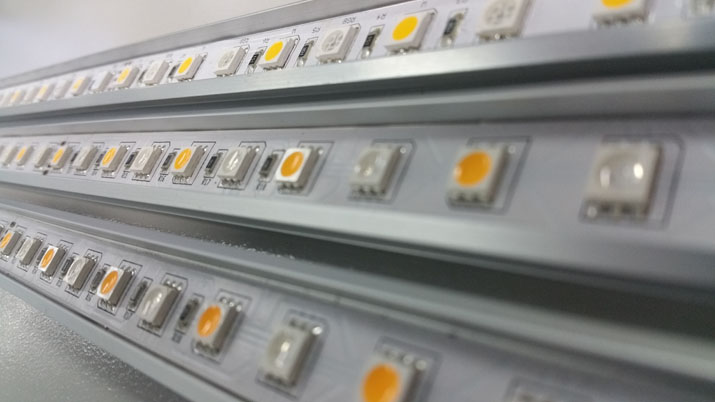Circadian Rhythm & Stimulus
You’d be surprised how important lighting is to every day life. Capturing and controlling the light we receive each and every day can have huge positive impacts on your health and well-being. There are a growing number of studies in the area, some have even proven the hugely positive impact of light on Alzheimer sufferers, among many other health benefits.
Lighting’s effect on health
We’ve come a long way since the invention of the electric light bulb. In just over a hundred years, we’ve see some great innovations from the incandescent light, to halogen bulb, then to fluorescent lighting, and more recently, LED lighting.
Until recently, the discussion has been surrounding how a light source can illuminate an object. But now we are asking the question – how can a light bulb improve a person’s health and well-being? There are a rising number of studies being published that clearly show the health benefits of lighting. These studies also prove the worrying fact that poor lighting can be detrimental to your health. But every person is different, and every person will have a range of reactions to different lighting.
We now live in a world of individualisation and customisation. And with some recent additions to the market, especially from Philips, we can now start asking the question – how can we tailor this idea of ‘healthy lighting’, or human-centric lighting, to each individual person?
But before we are able to begin tailoring human-centric lighting for positive health benefits, we first need to understand what is affected by lighting, and how we can use light to our advantage.
What is Circadian Rhythm?
To begin understanding Human Centric Lighting, let’s first explore this concept of a Circadian Rhythm.
Simply put, the circadian rhythm is one way of describing the biological body clock. A circadian rhythm is a cycle that repeats every 24.2 hours1. A circadian rhythm can be changed, allowing us to ‘entrain’ the system to begin and reset at different times of the day. The circadian rhythm is usually in sync with the rotation of the earth, lining up with the sunrise and sunset each day.
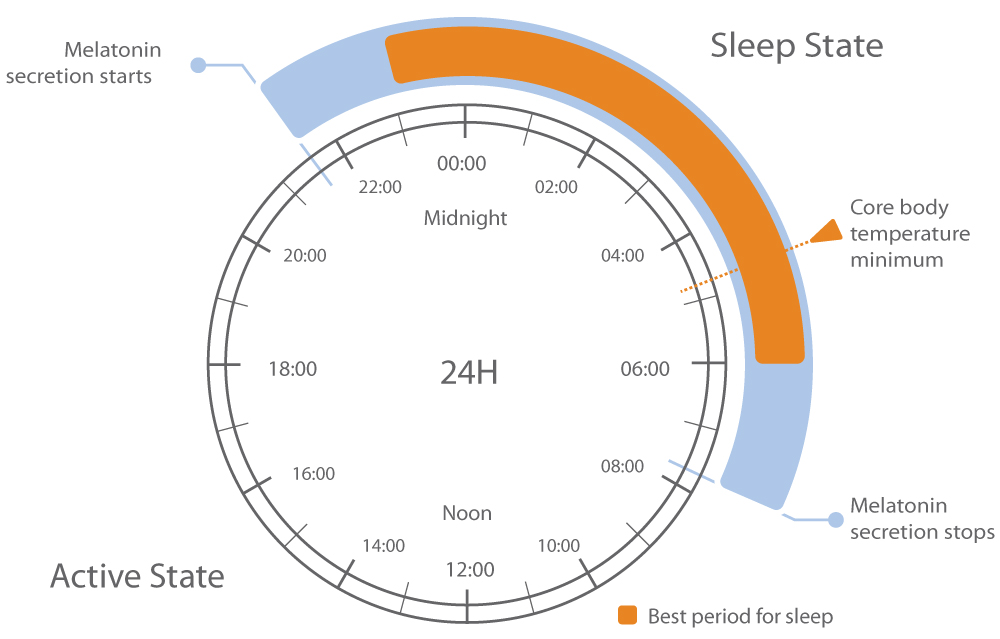
Image: The effect of light on our sleep/wake cycle, Philips Lighting
As part of the circadian rhythm, the body releases different hormones at different times of day, Melatonin and Cortisol, which control how our bodies react and complete certain functions. This schematic shows a representation of our body clock cycle. Melatonin is produced during the period that we habitually sleep, usually throughout the night. The hormone melatonin helps regulate our body temperature and body clock. The end of melatonin secretion marks the beginning of the regular wake period. During this period we do not produce melatonin. Melatonin production only resumes one to two hours before the time that we habitually go to sleep, provided the light exposure during these hours remains sufficiently low. The best period for sleep is during melatonin secretion.
These functions do usually occur at a set point, based on the natural sunlight. However, other lighting can also affect our circadian rhythm.
How does Light affect Circadian Rhythm?
Light is the main source of resetting our circadian rhythm. Without it, the body would be going through each cycle later and later in the day (as the circadian rhythm is slightly longer than a solar day at 24.2 hours).
Throughout our evolution, humans have been naturally resetting the circadian rhythm through the rising of the sun. In recent years however, we are being exposed less and less to the cycle of the sun, as well as other external factors. We are spending more and more time inside, further away from the natural sunlight. Even factors such as screen-time watching TV, computers, and mobile phones, are throwing out the circadian rhythm.
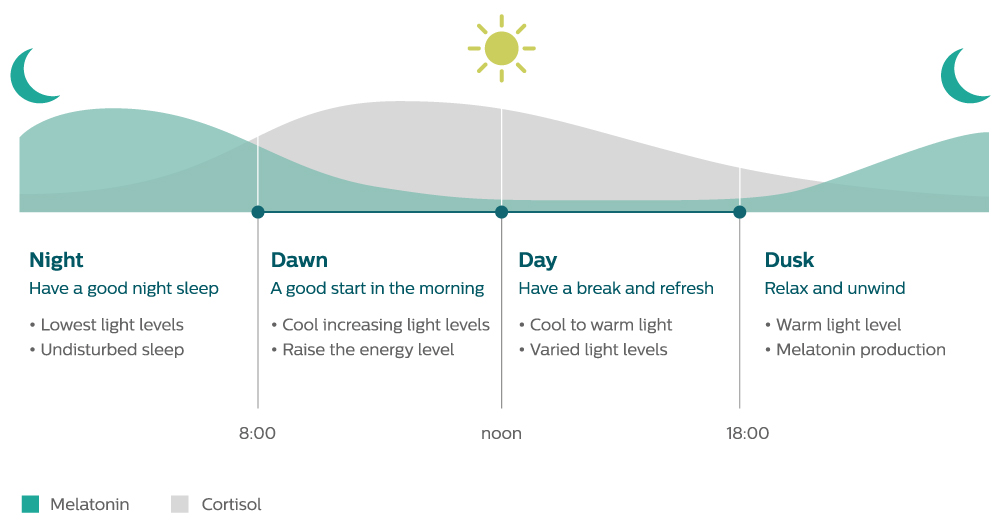
Chart: Supporting Outcomes Through Light, Philips Lighting
In order to combat this, we need to mimic the external natural conditions indoors. Philips Lighting have summarised various studies into this simple chart which explains the basic requirements to simulate the light levels of the sun.
This all sounds well and good, but how do we properly replicate the effect of the sun indoors? In order to do so, we are in need of a specific type of lighting fixture, widely covered by the term ‘tunable light’.
What is Tunable Light?
Simply put, Tunable Light (or tunable white) products allow you to mix warm and cool white light and adjust light intensity so that you can mimic outdoor lighting conditions.
When referring to tunable light products, one of the most common metrics is the colour temperature, measured in Kelvin. Starting at 1000K, which is a nice warm glow, moving through to 10,000K; a cold, bright light. This type of product allows us to use various colour temperatures, as well as intelligent programming through the Philips Dynalite system, to accomplish a daily light pattern like this:

Image: The Midnight Sun, Anda Berczky
As different parts of the day have different colour temperatures, using tunable white fixtures allows us to properly mimic the sun’s colour temperatures. Studies have shown that “Introducing a regular 24-hour pattern of light and dark by modulating the amount of electric lighting (and daylight) we are exposed to daily can have many positive benefits.”
We can use these benefits to our advantage. Studies have found that different colour temperatures at certain times of day can alter our mood and energy & concentration levels. By correctly manipulating the light inside an office, a school, or healthcare facility, we can assist in creating a calm atmosphere, or a focused area which a study has likened to a caffeine hit. But that isn’t all. By maintaining a regular rhythm of these light changes, we can promote healthy sleeping patterns, further assisting with our positive state of mind.
Therefore the colours used in tunable white lights are directly related to the circadian rhythm. If incorrect levels or colours of light are provided at the wrong time of day, the entire circadian rhythm is thrown out of whack.
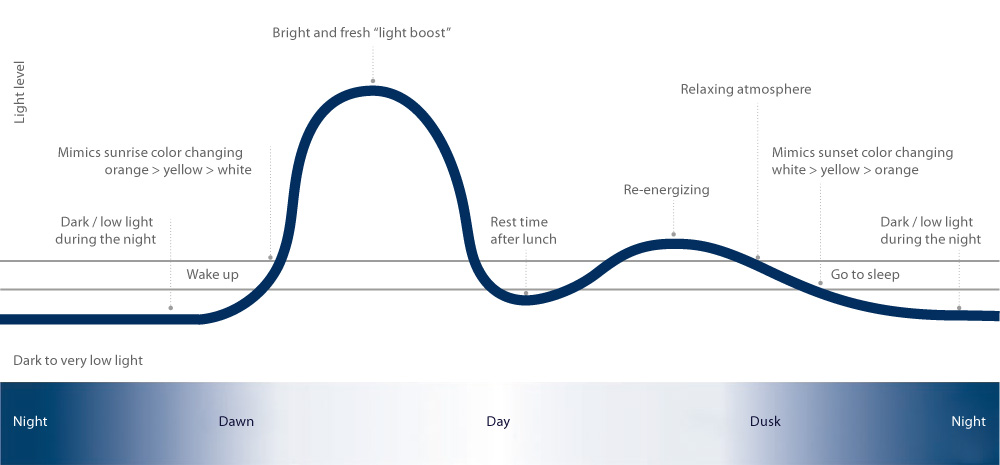
Chart: Backgrounds on Light & Health, Philips Lighting
Studies have shown that receiving blue light after a certain time, usually 1-2 hours before bed time, delays the production of melatonin, in turn delaying the continuation of the circadian rhythm. Red light, on the other hand, has been shown to provide stimulation to the mind to assist in concentration late at night, whilst not delaying the circadian rhythm.
Unfortunately it’s not as simple as plugging in a new ‘tunable white’ light bulb, and expecting it to automatically change throughout the day. Nor can you just program in a specific colour to a button. You need a powerful control system behind the tunable white lights. What we use for tunable white applications is the Philips Dynalite system.
Tunable Light & the Philips Dynalite system
Philips Tunable White solutions offer the freedom to create different ambiances in offices, schools, retail spaces, and healthcare environments. With the Philips Dynalite system, a combination of predetermined presets instantly sets the scene for room ambiance that supports the next scheduled task or spontaneous activity. These preset settings have been shown to help people stay focused and alert. By default the system offers 4 different presets – Standard, Presentation, Focus, and Calm. These presets can be altered and customized to suit your unique needs.
Philips Dynalite offers simple control of tunable white fixtures with powerful automation that is infinitely scalable from a few fixtures through to an entire office block. Integration with existing Philips Dynalite systems is easy, offering centralized management and monitoring of your entire lighting syste, plus offering a control link between the lighting and BMS/HVAC systems. And the entire system is controllable via beautiful user interfaces, or via a simple-to-use mobile app.
Benefits in Aged Care
Now you’ve got an understanding of the circadian rhythm and what effect light can have on it. So, what can we do with this information? The most obvious example for tunable white is in easily-controlled environments, like those provided in Aged Care facilities.
The technology we use, especially through the Dynalite system, can help support health & wellbeing, help avoid falls through proper lighting techniques, and helping older adults see better through correct programming techniques.
Older adults are far more susceptible to circadian disruption due to their ageing visual systems. By disrupting their circadian rhythm, it accentuates issues such as poor sleep quality, mood, and alertness. It becomes a vicious cycle, as a lack of sleep leads to increased napping during the day, further disrupting the circadian rhythm.
Most existing aged care facilities take a one-size-fits-all approach to their lighting. This causes further issues, as the current lighting solutions in aged care facilities don’t provide the correct light to support the circadian rhythm.
There are plenty of studies proving the health benefits of circadian lighting for older adults. Tunable light has been shown to mitigate symptoms of Alzheimer’s disease, amongst many other benefits.
Images: Rensselaer Polytechnic Institute
- Design of Bedrooms
- Reading areas for task lighting brighter
- Cove lighting for orientation
- Stumble lights under bed
- Linear lights to assist with navigation and orientation
- Strip lighting around bathroom door for navigation
- Enough light to navigate at night and provide safety, yet won’t affect circadian rhythm
- Design of common areas
- Brighter lighting on tables to combat against ageing vision
- Corridors to match bedrooms so circadian rhythm isn’t affected on night bathroom trips
- Control interfaces that simplify use
- Programming of controllers (corridor hold, etc)
- Bright task lighting in reading areas
- More linear lighting to assist in navigation
Benefits in Healthcare
Patients spending longer time in healthcare can benefit from lighting that changes naturally from morning to evening to night. Light colour and intensity can help to create a natural rhythm.
Lighting can make the atmosphere calm (easier to rest) or more energetic (easier to rehabilitate). Easily adjustable lighting control is important for patients who have limited ability to move.
Images: Rensselaer Polytechnic Institute
Solution from Philips
- Patient Rooms
- Soft, even light above bed with no glare
- Task lights over desk area for visitors
- Spotlights above bed for reading
- Tunable white recessed fixtures
- Linear cove lighting for orientation
- Task lighting above bed for examinations
There are many other applications in healthcare, and with the flexibility of the Philips Dynalite system, each room, even each bed, can be customised to the needs of each patient. The benefits are seen best when the patients are admitted over a longer period, usually over a week.
Tunable white is just as important for health care workers. Hospitals operate 24 hours a day, placing an enormous strain the employees and their circadian rhythm.
More research is needed on the effects of an altered circadian rhythm on shift workers, yet at the moment the consensus is to maintain their circadian rhythm using light that still promotes alertness.
Benefits in Education
Using the same technology, there are some great uses in education as well. Through careful control of the luminance levels, colour temperature and lighting direction it is possible to create an environment that is conducive to learning. Using lighting controls the teacher can change the environment, making the atmosphere calmer, more energetic or easier for the students to concentrate. During the winter artificial light can help students keep a stable circadian rhythm.
Adolescents’ tendency to be “late to bed and late to rise” puts them at odds with structured school schedules. As they approach college age they experience progressively later sleep onset and reduced sleep times. The resulting sleep disorders can lead to poor scholastic performance and behavioural problems. Improved classroom lighting design can foster better scholastic and health outcomes by helping to shift the timing of sleep and promote entrainment to the 24-hour solar day.
Images: Rensselaer Polytechnic Institute
In a classroom setting the cooler temperature of light promotes concentration and cognition. Studies show a significant improvement in test scores when using tunable white solutions.
Warm light promotes calm, best used for situations such as directly after a lunch break.
Benefits in Office
Correct light and darkness at the right time adjust human circadian rhythms; influencing your alertness, wellbeing and performance. Light can improve the mood, increase hand to eye coordination and help to control stress. Well-designed lighting for specific tasks can help to enhance concentration, safety and efficiency.
Studies indicate that with the right kind of lighting, productivity of an employee can be improved up to 8%.
Image: Tunable White Solutions, Philips Lighting
- Customisable tunable light above employee workstations
- Daylight harvesting to increase energy efficiency
- Improved employee efficiency and mood levels
- Better oversight & increased savings for Facilities Managers
What does the future hold?
Internet of Things
The most obvious step this technology can take is with the Internet of Things integration. The Philips Dynalite system can easily be integrated into an existing network, which leads to limitless possibilities.
Imagine lighting without the need for ever flicking a switch. Having so many smart devices within reach, such as a smart watch, turns lighting control into an effortless task. Coupled with occupancy monitoring, the lighting system can automatically switch scenes on or off depending on your location within the room. And take that level of monitoring one step further, in aged care for example, where inactivity for a certain time can lead to an automated alert being sent to staff.
Companies right now are developing devices that sit on your body, and can read your stress levels. Imagine your lighting automatically changing to help calm you down, or assist with your concentration levels?
And all of these innovations can follow you wherever you go. In the not too distant future, you can expect to see personalised lighting across buildings thanks to positioning coming directly from your mobile phone.
These ideas may seem too futuristic, yet are also just around the corner.
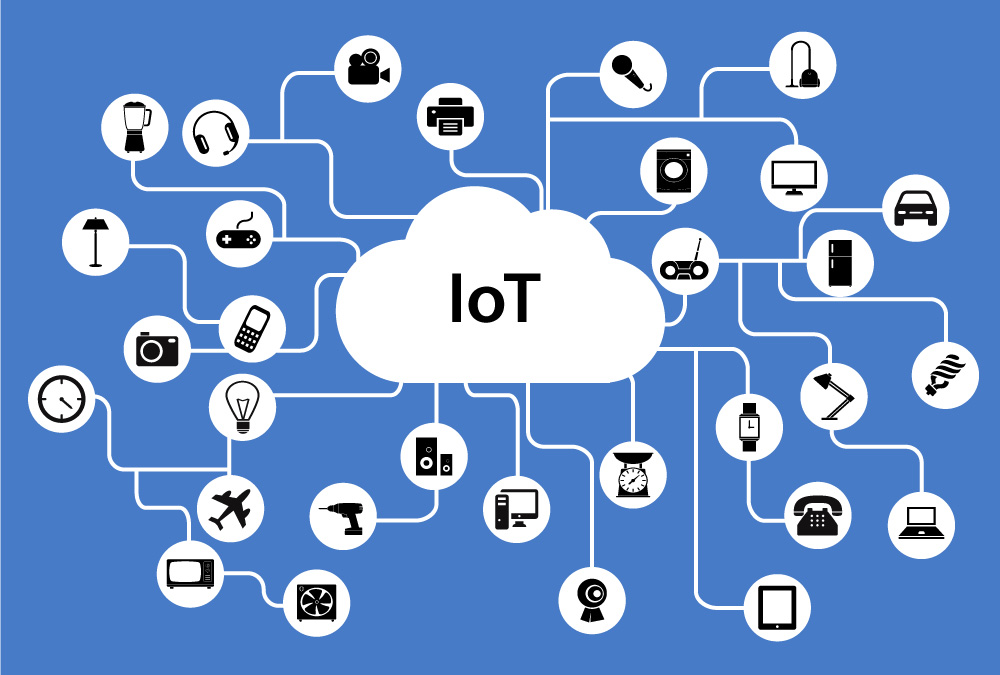

Energy Savings
Many institutions still haven’t made the switch over to LED lighting, nor fully make use of the power of the Philips Dynalite system. By making the switch to Tunable White LEDs, businesses can make huge savings on LEDs, on top of the almost 40% saved on your energy costs via the Philips Dynalite system.
Facilities Managers can also have greater visibility of how the building is used, making them able to schedule maintenance & cleaning more effectively, as well as switching off other systems such as heating and cooling based on room occupancy and usage.
Residential
When the tunable revolution becomes widespread in the commercial market, the residential market will be soon to follow. Already we are seeing smart bulbs in the market offering tunable light applications, some of which we are able to control with the Dynalite system. It’s only a matter of time before this kind of automation appears in everyone’s houses.
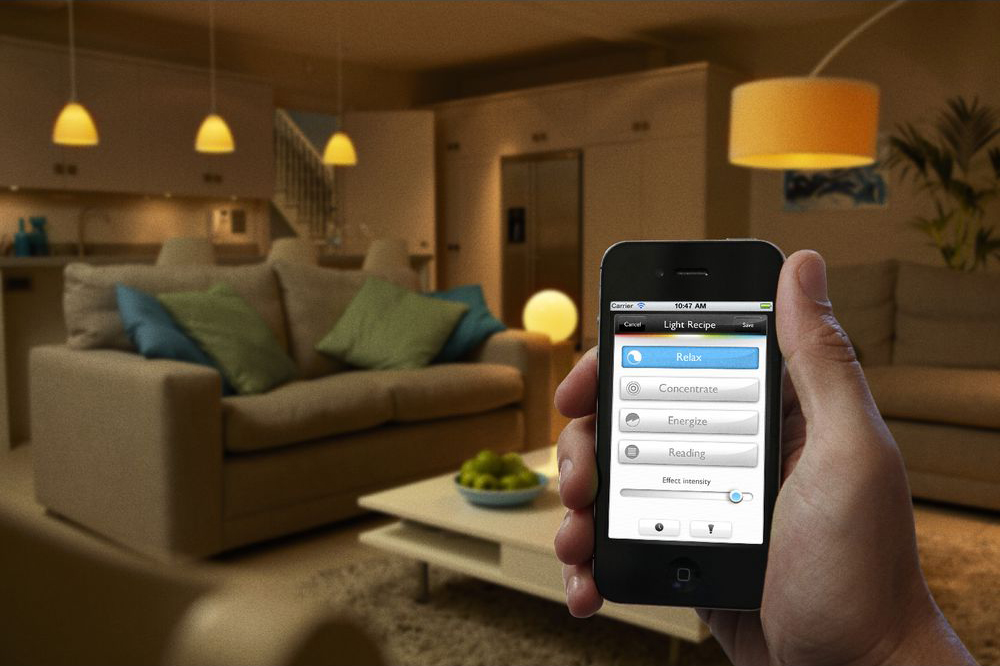
Image: Philips Lighting
The Tunable Light Revolution is here. Don’t wait to adopt this brilliant technology – get in touch with the team at Lightmoves to see how we can make your lighting human-centric.
References
Click to expand References
- C. A. Czeisler, J. F. Duffy, T. L. Shanahan, E. N. Brown, J. F. Mitchell, D. W. Rimmer, J. M. Ronda, E. J. Silva, J. S. Allan, J. S. Emens, D. J. Dijk, and R. E. Kronauer. Stability, precision, and near-24-hour period of the human circadian pacemaker. Science 284 (5423):2177-2181, 1999



